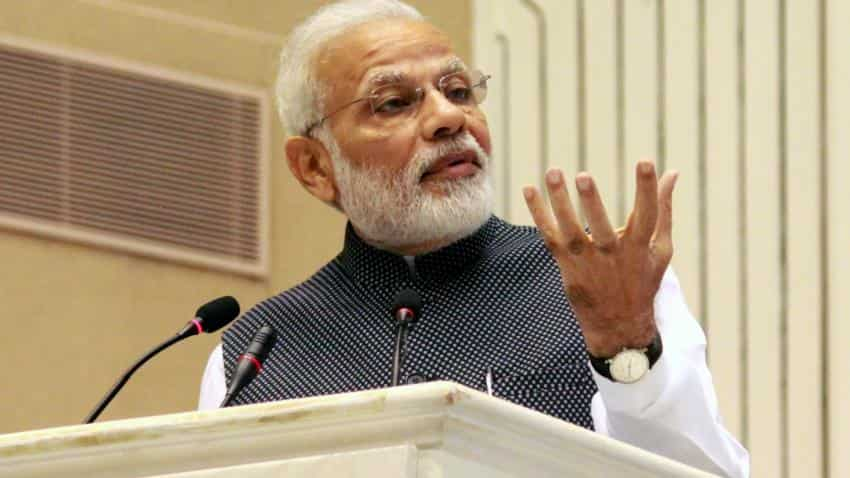The year of 2016 has been an eventful one for the Indian economy. While the parliament passed the GST Bill which is expected to boost growth, the demonetisation drive by Prime Minister Narendra Modi is expected to contract economy in the near-term.
Here’s a quick recap of the big decisions taken in 2016:
1. Goods and Service Tax (GST) bill: One of the biggest tax reforms the country has seen till date was the passage of the GST bill in both houses of parliament in early August this year.
The ‘One Nation, One Tax’ would subsume many excise duties which were prevailing at centre and state levels, it would be a value addition tax at each stage of production and the final consumer would bear the tax.
The rates proposed to be implemented from next year were a ‘five-slab’ structure. The rates were - 0% on food grains and other agricultural products, 5% on items of mass consumption (edible oils, spices, tea, coffee), 12% on electronics, processed food, 18% on soaps, oils, shaving cream and 28% on luxury commodities.
The GST council which met yesterday decided on clauses on Central GST which is a part of three categories – Integrated GST and State GST.
2. Six month maternity leave: With the modification of the 1961 Maternity Benefit the government increased paid maternity leave from 3 months to 6 months on August 11 in both government and private sectors.
An option to work from home was also provided for in the law which new mothers who are employed by companies that employ more than 50 persons could avail.
3. Regional Connectivity scheme: The scheme which sought to provide air services between un-served and under-served areas, was part of larger plans to boost the domestic aviation sector.
The scheme introduced in the second week of September is estimated to take off in early January.
Seeing as how there were 394 un-served and 16 under-served airports in India, Minister of Civil Aviation, Ashok Gajapathi, advocated affordable air travel along with improving connectivity to remote regions like North-East India.
A slew of incentives were proposed under RCS, including Rs 2,500 cap on airfare for one-hour flights and airlines under RCS will be extended viability gap funding (VGF) while the states concerned are required to offer certain concessions such as providing police and fire services free of cost.
4. High speed trains: The railways mulled bringing high speed, Spanish make –Talgo trains to Indian tracks in mid-September.
After successfully completing its test run between Mumbai to Delhi in less than 12 hours the Ministry of Railways said they were all set to lease two to five Talgo trains from the Spanish manufacturer in less than a year’s time.
Media reports said that the Executive class car can seat up to 20 people and has rich looking black seats that are quite comfortable; while the general chair car can seat up to 36 people.
5. PM Modi’s Cashless Society: The long propagated ‘cashless society’ ideal by PM Modi finally saw material results after the government decided to ban old currency notes.
Initiatives that were spoken about by Finance Minister, Arun Jaitley in the Union Budget 2015 like full utilisation of Jan Dhan Yojana accounts, optimum usage of RuPay debit cards and Aadhar and mobile usage to implement direct benefits to citizens, took shape this year.
Payments Bank, a ‘harbinger’ of a revolution by the Indian banking sector which was introduced last year was carried out this year by Airtel that launched its bank on a pilot basis in Rajasthan in November.
Other companies like Paytm said it would convert its digital wallet platform into a payments bank once it is granted license by RBI and Vodafone m-pesa limited said it will launch its bank latest by March.
The Unique Identification Authority of India planned to increase biometric authentication capacity through Aadhaar to 40 crore a day from 10 crore to encourage more use of the platform for realising a cashless society.
In November, Amul’s Chairman Jethabhai Patel said that the group will credit payments to its milk producers directly through the bank. The government also said it is looking into digital payments and benefit transfer to farmers.
Jan Dhan Yojana accounts saw an 11% hike in deposits to Rs 90 crore by December.
6. Demonetisation: BJP led government banned old Rs 500 and Rs 1,000 notes in India on November 8.
Although much has been said about the demonetisation move it was introduced to eradicate black money as overnight 86% of the higher currency denominations were made illegal tenders.
Due to the lack of available currency, digital transactions has become the rule of thumb and also promoted many other forms of digital payments in India.
Seeing a higher traction on RuPay card and Paytm platforms the government also promoted digital payments in other arenas like railway ticket booking, insurance premium, toll booths, petrol and diesel pumps by offering discounts.
06:06 PM IST







 Yet again, Finance Minister pays heed to Zee Business Managing Editor Anil Singhvi's call, extends ITR filing deadline
Yet again, Finance Minister pays heed to Zee Business Managing Editor Anil Singhvi's call, extends ITR filing deadline Coronavirus: Big ATM cash, minimum balance, Income Tax, GST, PAN, Aadhaar announcements made by Modi government- All details here
Coronavirus: Big ATM cash, minimum balance, Income Tax, GST, PAN, Aadhaar announcements made by Modi government- All details here GST Returns Filing: New dates announced
GST Returns Filing: New dates announced  Smartphones to get expensive from April; makers seek relief from government
Smartphones to get expensive from April; makers seek relief from government 39th GST Council Meeting: Full list of decisions taken - All you need to know
39th GST Council Meeting: Full list of decisions taken - All you need to know